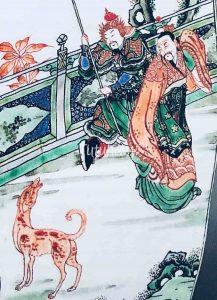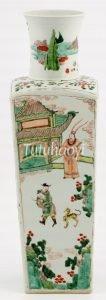Duke Ling of Jin Sending His Dog to Attack Zhao Dun
晋灵公嗾獒咬赵盾
© Tutuhaoyi.com owns the copyright of the description content for the images attached. Quoting all or part of the description content on this page is permitted ONLY IF ‘Tutuhaoyi.com’ is clearly acknowledged anywhere your quote is produced unless stated otherwise. (本页描述内容版权归Tutuhaoyi.com所有,转发或引用需注明 “Tutuhaoyi.com”, 侵权必究, 已注开源信息的条目除外。)
When the old duke of Jin (晋) passed away, his heir was still in the cradle. It was with the powerful minister Zhao Dun (赵盾)’s support that he succeeded in ascending the throne. Unfortunately, the young duke, who was posthumously given the title Duke Ling of Jin, Jìn Líng Gōng (晋灵公, ? – 607 BCE), became increasingly the opposite of an ideal ruler. When the righteous Zhao Dun tried to alter the young duke’s misbehaviours by repeated remonstrances, he aroused resentment in the duke’s heart, who subsequently made several attempts on his life.
Once he made the excuse to invite Zhao to drink with him while soldiers were gathered to ambush him. Zhao’s retainer Timi Ming (提弥明) realised the plot and rushed to the table to rescue his master. When Zhao was supported to leave the place, the duke sent his immense dog to attack him. Timi was a valiant fighter and he smote the brute and put an end to it.
This scene served as a classic admonishing example for statesmen and rulers alike.
Read Dr Yibin Ni’s research article – How a massacre in ancient China influenced European literature, painting and theatre in Blogs section.
Fig 1-2: porcelain hexagonal lantern, Kangxi period (1662–1722), courtesy of the National Gallery of Art, Washington D. C.
Fig 3-4: porcelain square vase with overglaze enamelled decoration (detail of a side), Shunzhi period (1644–61), courtesy of the Sir Michael Butler Collection



